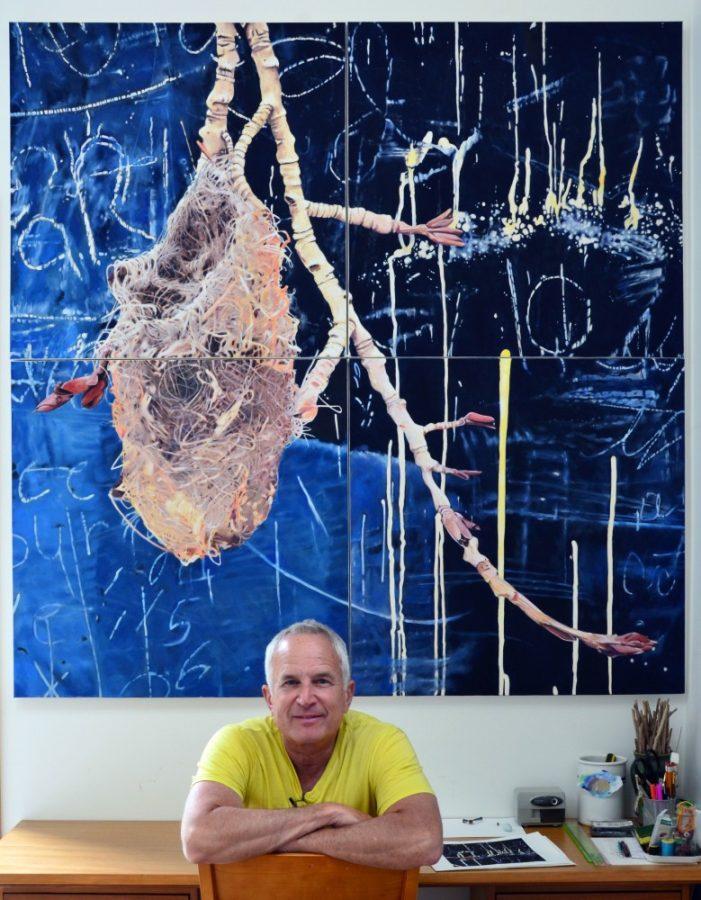UA Museum of Art presents its newest exhibition by artist Michael Haykin, “Fifteen Indelible Lives,” this Thursday.
After being asked to create this collection specifically for this space, the curators at the museum allowed Haykin the rare opportunity to have free reign over the project and its creative direction.
So it was to the studio for him, where he would start painting in the morning until he simply could not paint anymore. Then, he would walk around in nature until he couldn’t stand not painting.
RELATED: UA Museum of Art opens doors to ecology, sustainability
On his walks, he looks for inspiration.
“I’m interested in the very familiar and re-examining it,” Haykin said, “reminding people of the stuff they know very well.”
Haykin described one walk in which the entire focus of the piece shifted and took on new layers of meaning. He stumbled into an old, abandoned building with human markings. “Tom was here” and “Mary loves Bob,” adorning the walls and he was struck by the layered and diverse proclamations of individuals asserting their presence on the world or, as Haykin put it, “saying something when they had nothing to say.”
This experience inspired the piece “Palimpsest, Ruby Sweet,” the first in his collection to focus on human markings rather than nature. From this point on, the body of work took on new direction and sought to bridge the gap between the imagery of language and his beloved elements of nature.
The collection is mainly large-scale work, many of which are multi-paneled.
RELATED: UA Museum of Art wants to draw students in
“Large-scale painting can make the familiar exotic and fresh again,” Haykin said. “To do a large-scale painting on multiple panels makes the viewer analyze over and over the edges of the piece.”
This idea of breaking up edges with multiple panels is a maneuver Haykin uses for a more critical viewing experience. The gesture of maximizing and enlarging these tiny, forgotten life forms is complicated by the act of breaking them apart, forcing the images to exist disjointed on the wall.
As much as his work is a celebration of life, it is also a lamentation of death.
With pieces like “Death of a Shrew,” Haykin explores the perpetual cycles of life and death all around us and asserts each life’s indelibility with his paint brush. Brimming with honest passion, Haykin preaches precisely what he paints.
“These seemingly insignificant lives—whether plant or animal or echo of some human life that left a marking—I don’t want them to be overlooked or taken for granted,” Haykin said.
The exhibit opens Oct. 6 at the UA Museum of Art.
Follow Shane Holly on Twitter.









